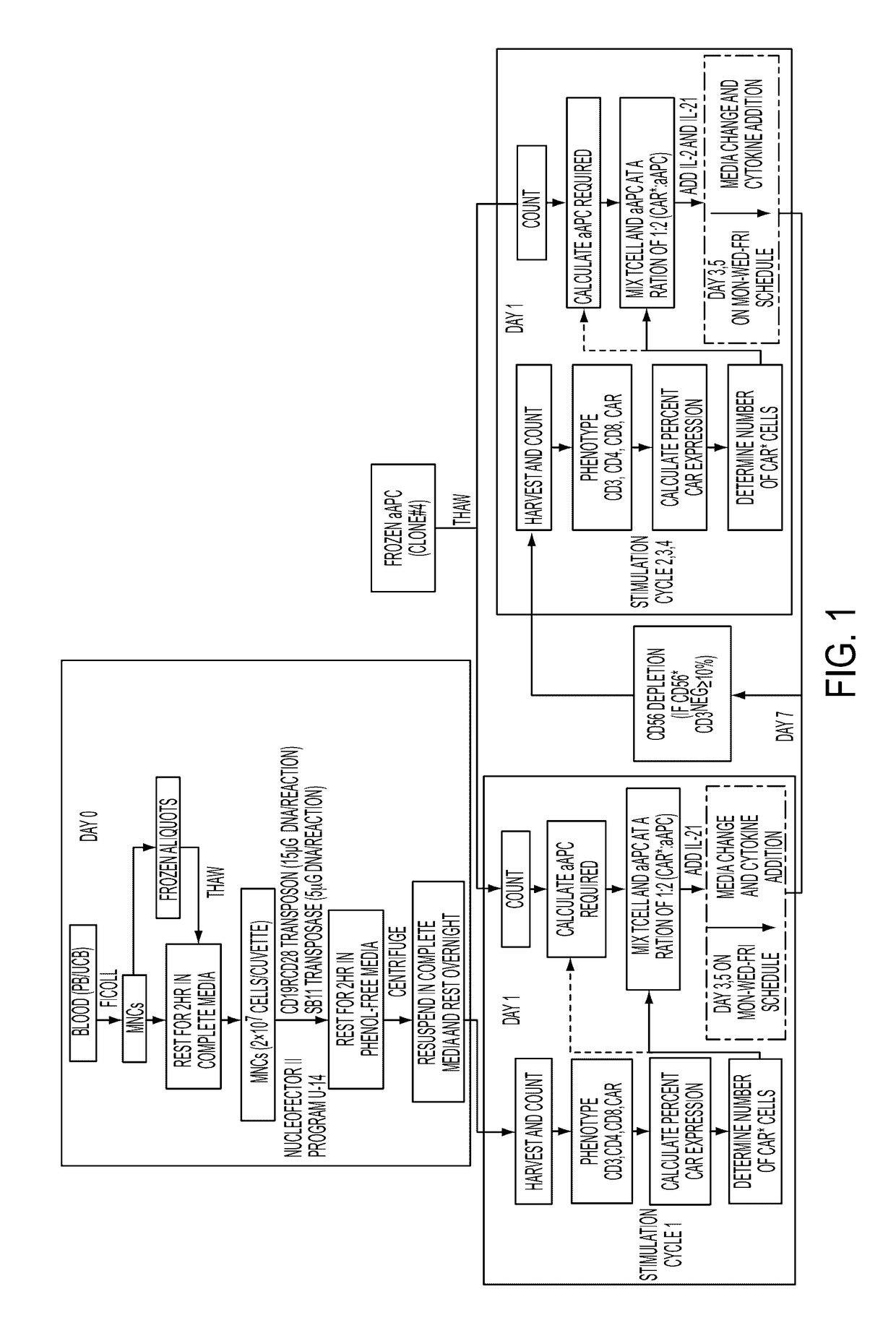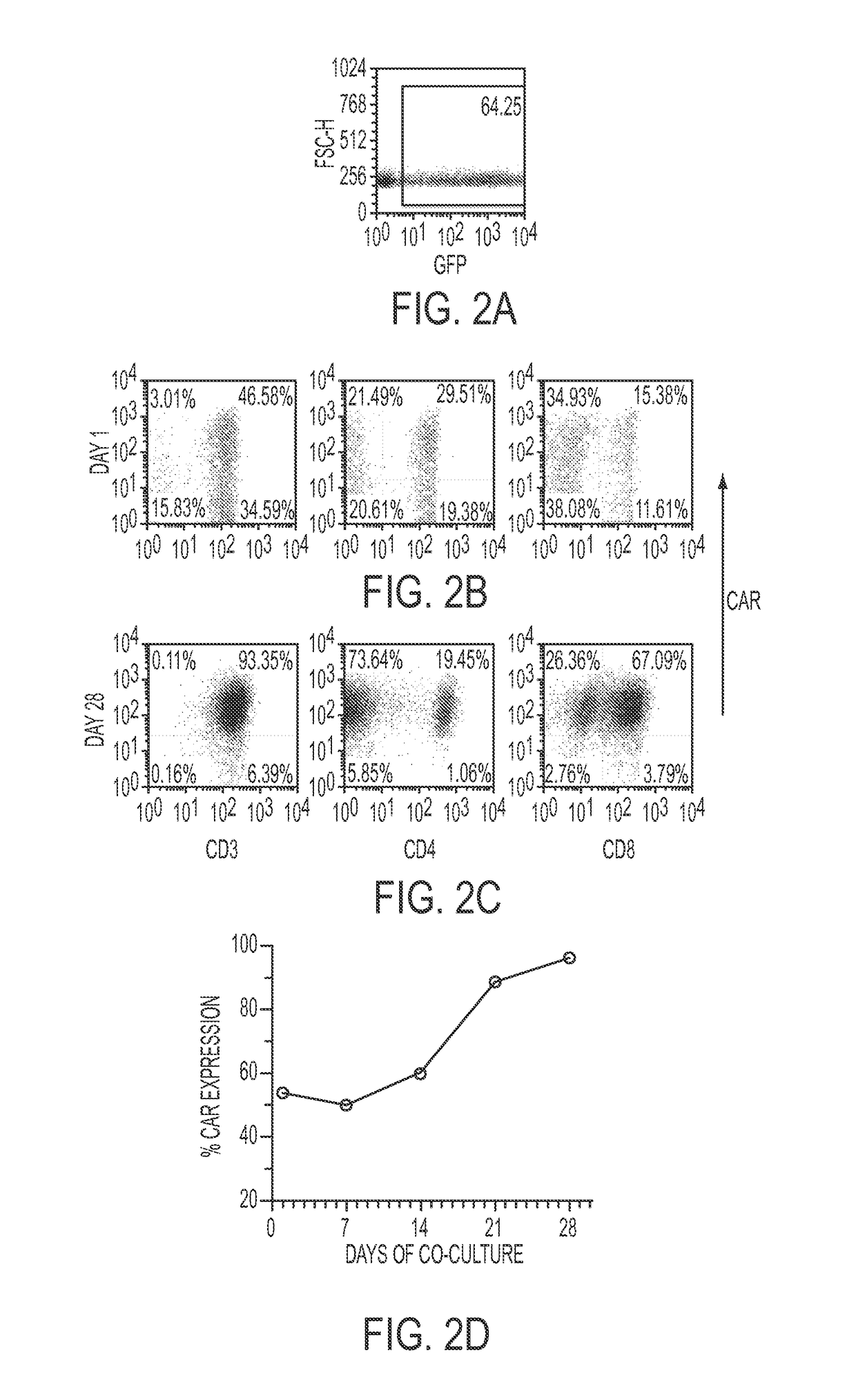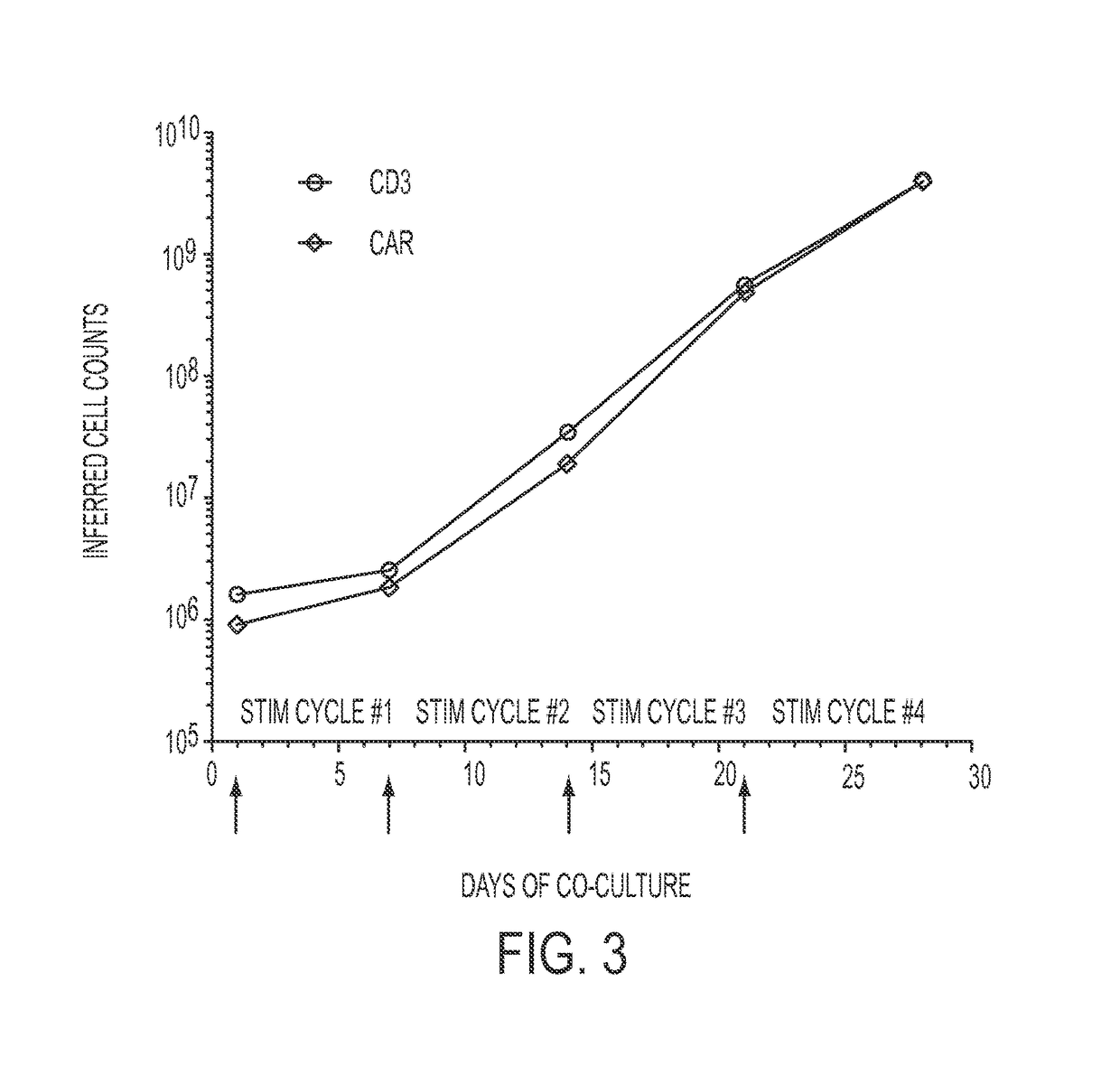Human application of engineered chimeric antigen receptor (CAR) T-cells
a technology of chimeric antigen receptor and human application, which is applied in the field of human application of engineered chimeric antigen receptor (car) t cells, immunotherapy, etc., can solve the problems of high cost and incompatibility with current good manufacturing practice (cgmp)
- Summary
- Abstract
- Description
- Claims
- Application Information
AI Technical Summary
Benefits of technology
Problems solved by technology
Method used
Image
Examples
example 1
Clinical Application of Sleeping Beauty and Artificial Antigen Presenting Cells to Genetically Modify T Cells From Peripheral and Umbilical Cord Blood Materials and Methods
[0185]Isolation of Mononuclear Cells (MNC) from PB and UCB. On or before Day 0, dilute PB with an equal volume and UCB with four volumes of PBS-EDTA. Slowly layer diluted blood (25 mL) onto Ficoll (12 mL) in a 50 mL centrifuge tube(s) and centrifuge at 400×g for 30-40 min (no brake). Collect and transfer the mononuclear cell fraction (interface) using a transfer pipette to a fresh 50 mL centrifuge tube. Bring the volume up to 50 mL with PBS-EDTA and centrifuge at 450×g for 10 min. Aspirate the supernatant and gently re-suspend the cell pellet(s) in 50 mL of Complete Culture Media (CCM). Centrifuge at 400×g for 10 min. Gently re-suspend and pool the cell pellets in CCM and perform a cell count using Trypan blue exclusion (Cellometer, PBMC program). MNC can be used for electroporation (Nucleofection) or cryopreserve...
example 2
Clinical Application of Sleeping Beauty and Artificial Antigen Presenting Cells to Genetically Modify T Cells from Peripheral and Umbilical Cord Blood Results
[0195]Electro-transfer of DNA plasmids and propagation of T cells on γ-irradiated aAPC can be used to generate clinically-appealing numbers of T cells derived from PB and UCB for human applications. These genetically modified T cells express an introduced CAR that recognizes the TAA CD19, independent of major histocompatibility complex. The SB-derived DNA plasmids to express the (i) transposon, a 2nd generation CAR (CD19RCD28) that signals through CD28 and CD3-ε14, and (ii) transposase, SB11 (Jin et al., 2011), have been previously described (Singh et al., 2011; Davies et al., 2010; Kebriaei et al., 2012). The plasmids used in the current study were produced commercially by Waisman Clinical Biomanufacturing Facility (Madison, Wis.). The aAPC (clone #4), derived from K562 cells (parental line obtained from American Type Culture ...
example 3
Manufacture of Clinical-Grade CD19-Specific T Cells Stably Expressing Chimeric Antigen Receptor Using Sleeping Beauty and Artificial Antigen Presenting Cells Materials and Methods
[0196]Generation of Clinical-Grade DNA Plasmids. The SB transposon, CoOpCD19RCD28 / pSBSO, expresses the human codon optimized (CoOp) 2nd generation CoOpCD19RCD28 CAR (SEQ ID NO: 1) under EF-1 / HTLV hybrid composite promoter (InvivoGen) comprised of Elongation Factor-1α (EF-1α) (Kim et al., 1990) and 5′ untranslated region of the Human T-Cell Leukemia Virus (HTLV) (Singh et al., 2011; Davies et al., 2010). The derivation of this DNA plasmid is described in FIG. 10. The SB transposase, SB11, under the cytomegalovirus (CMV) promoter was expressed in cis from the DNA plasmid pCMV-SB11 (Singh et al., 2011). The derivation of this DNA plasmid is described in FIG. 11. Both plasmids were sequenced in their entirety and manufactured by Waisman Clinical Biomanufacturing Facility (Madison, Wis.) using kanamycin for sele...
PUM
| Property | Measurement | Unit |
|---|---|---|
| volumes | aaaaa | aaaaa |
| volumes | aaaaa | aaaaa |
| volume | aaaaa | aaaaa |
Abstract
Description
Claims
Application Information
 Login to View More
Login to View More - R&D
- Intellectual Property
- Life Sciences
- Materials
- Tech Scout
- Unparalleled Data Quality
- Higher Quality Content
- 60% Fewer Hallucinations
Browse by: Latest US Patents, China's latest patents, Technical Efficacy Thesaurus, Application Domain, Technology Topic, Popular Technical Reports.
© 2025 PatSnap. All rights reserved.Legal|Privacy policy|Modern Slavery Act Transparency Statement|Sitemap|About US| Contact US: help@patsnap.com



